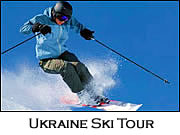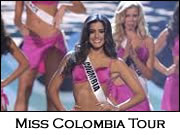Information about Peru
Map of PeruIt's the multiple layers of great civilizations which makes Peru so fascinating. You can wander around colonial cities which have preserved the legacy of the Spanish conquistadors, visit the ancient Incan capital of Cuzco, explore the lost city of Machu Picchu and ponder the enigma of the Nazca Lines (answers on a postcard please). You don't have to be in Peru too long to realize that the "New World" had a rich and complex cultural life thousands of years before Pizarro turned up wearing funny clothing.
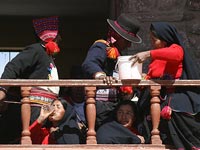 All of this exists in a country with some of the most spectacular and varied scenery in South America. The Peruvian Andes are arguably the most beautiful on the continent and the mountains are home to millions of highland Indians who still speak the ancient tongue of Quechua and maintain a traditional way of life. The verdant Amazon Basin, which occupies half of Peru, is one of the world's top 10 biodiversity "hot spots" - a species-rich area of tropical rainforest that will make your head spin when you start to learn about its ecology. And the coastal deserts, with their huge rolling dunes, farmland oases and fishing villages, are underappreciated by travelers but offer the opportunity to get off the Gringo Trail in a big way. But you don't have to be a zoologist, an anthropologist or a mountain climber to enjoy Peru, all you need is a keen eye, a love of landscape, an interest in history and a very good money belt.
All of this exists in a country with some of the most spectacular and varied scenery in South America. The Peruvian Andes are arguably the most beautiful on the continent and the mountains are home to millions of highland Indians who still speak the ancient tongue of Quechua and maintain a traditional way of life. The verdant Amazon Basin, which occupies half of Peru, is one of the world's top 10 biodiversity "hot spots" - a species-rich area of tropical rainforest that will make your head spin when you start to learn about its ecology. And the coastal deserts, with their huge rolling dunes, farmland oases and fishing villages, are underappreciated by travelers but offer the opportunity to get off the Gringo Trail in a big way. But you don't have to be a zoologist, an anthropologist or a mountain climber to enjoy Peru, all you need is a keen eye, a love of landscape, an interest in history and a very good money belt.
Amazonas
Capital city of Chachapoyas. It is close to the famed Jungle Kuelap Ruins, Moyobamba and known for its 2,500 varieties of orchids.
Arequipa
The "White City" located in the southern highlands, 2359.152 m (7,740 ft) above sea level on the slopes of the Misti Volcano. It is the second largest city in Peru. Crammed with Spanish Colonial and Andalusian influences and architecture, the Santa Catalina Convent, Goyeneche Palace and the Casa del Moral are some of its most interesting sites. Beautiful countryside in the surrounding area. The awesome nearby Colca Canyon is twice as deep as the Grand Canyon! Visitors can make short one-day visits to the Colca, take a week-long trek (year around) or descend the river by kayak or raft, June thru September. The latter only for professionals ! Safer rafting can also be undertaken along the nearby calm Majes River, wandering through wonderful scenery, close to numerous archaeological sites. Apart from the Panamerican Highway, there are numerous flights daily from/to Lima (75 mins.), Cuzco (35 mins.) and Juliaca (25 mins.)
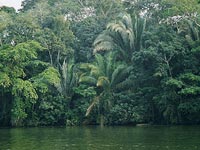 Ayacucho
Ayacucho
The Andean "Town of Churches", which is sometimes said to have more of them than houses ! Beautiful architecture ! A location with exquisite handicraft, including pottery, leatherwork, textiles and jewelery. One of the most important centers of Peru's long historical background. A 45 min daily flight from Lima.
Cajamarca
Located in the Northern Highlands it is famed for its traditional churches, and natural hot springs, such as the "Banos del Inca" (Inca Baths). The famous "Rescue Room" which Inka Athahualpa was forced by Conqueror Francisco Pizarro to fill with gold and silver, in an effort to save his life (didn't work, they killed him anyway!) is also located here.
Camana
A lovely town famous for its cuisine with around 35,000 inhabitants, located on the South Panamerican Highway, 830 km (515.738 mi) from Lima, just beyond Nazca and shortly before Arequipa. Camana is situated on the coast in an agricultural valley, with a river that produces the most delicious �camarones� (shrimp) in the country ! During summer its 40 km (25 mi) of beaches are host to large numbers of bathers from all around, especially from Arequipa. Underwater and over water sports are most popular here. Closeby you will find an Archaeological Museum and �Las Bodeguillas�, caves which were used - it is said - to hideway treasures brought down from Cuzco Inca Temples.
Canete
A small easily reached sleepy town south of Lima, close to several other similar locations in the Lunahuana valley. Ideal for rafting, down the Canete River. Accessible via the Southern branch of the Panamerican Highway. Tasty down-to-earth cuisine !
Chiclayo
Is a northern coastal city with a hot and sunny climate. Chiclayo and other towns in northern Peru are centres of witchcraft. Among the places of archeological interest around Chiclayo are Tucume, Batan Grande and Huaca Rajada, where a royal Moche mausoleum was found in 1987. The greatest discovery was the tomb of the Senor de Sipan, whose funeral clothes were adorned with gold, silver and jewels. Archaeologists have ascertained that he was a royal ruler 1600 years ago and that he was about 30 years old when he died. However, the Senor de Sipan is still shrouded in mystery. His precise identity and cause of death remain unknown. The priceless funeral artefacts unearthed from the tomb can be viewed at the Bruning Museum in Lambayeque, 41 km (25 mi) north of Chiclayo. There are daily flights from Lima (1 hour) and Trujillo (15 min) as well as road access via the North Panamerican Highway from Lima (780 km/485 mi).
Chimbote
A town just south of Trujillo, on the coast north of Lima. It is the largest fishing port in Peru, where fish flour and canned fish are produced in exportable quantities. It is also the largest steel producing center in the country.
Chincha
This small town is located 200 km (124 mi) south of Lima on the Panamerican Highway. Like so many other towns on the barren Peruvian Coast, Chincha is located in a rich valley producing fruit and vegetables. It is noted for being the birthspot of a very prominent Negro culture and folklore, brought from Africa by slaves who years ago worked on the "haciendas". One of these (San Jose) is now a converted vacation resort.
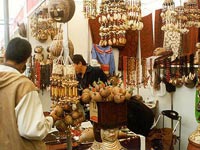 Cuzco
Cuzco
Situated 3360 m (11,024 ft) above sea level, was once the capital of the Inca Empire. Remains of the granite stone walls of the Inca Palace and temples can still be seen;the most remarkable is the Koricancha, or Sun Temple. Of the several churches, the 17th-century La Merced and its monastery San Francisco Belen de los Reyes, Santa Clara and San Blas are the most interesting, representative as they do a blend of colonial and Indian architecture. Overlooking Cuzco is the immense fortress of Sacsayhuaman. Also easily accessible are the Inca sites of Kenko, Puca Pucara and Tambomachay, and the markets of Pisac (Tuesdays, Thursday and Sundays) and Chincheros are also an attraction. The Inca City of Cuzco is also the main entry point to reach the world-famed wonders of Machu Picchu, The Sacred Valley of the Incas and the exciting Urubamba and Vilcanota River Rafting locations. Cuzco is best reached from Lima or Arequipa by air, daily. It is also accessible from Arequipa by train.
Huacho
A small town located 148 km (91.9629 mi) north of Lima on the Panamerican Coastal Highway. It is close to the National Park of Lachay, where a microclimate caused by a localized high degree of humidity, has created a natural area of extensive vegetation inhabited by small wildlife, right in the middle of the barren desert hillside.
Huaraz
This city of roughly 75,000 inhabitants is located 3091 m (10141.08 ft) above sea level in the Callejon de Huaylas, a valley overlooked by the Andes mountain ranges of the "Cordillera Blanca" and the "Cordillera Negra". Due to its glacial lakes and snowbound peaks the area is often referred to as the "Peruvian Switzerland". Closeby mountain "Huascaran" is the tallest in Peru (6,800 meters). Huaraz is mostly sunny and dry during the daytime and cold at night, with rainfalls December thru April. Mountain climbers from all over the world relish visiting Huaraz.
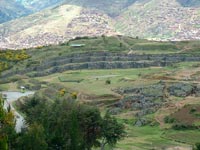 Ica
Ica
Ica is easy to reach by car from Lima via the South Panamerican Highway. The regional Museum at Ica houses many objects from the primitive Peruvian cultures : mummies, war trophies, pottery, cloth and gold ornaments. The surrounding area is renowned for its lovely vineyards. Local wines and the famous "Pisco" brandy are produced here !
Ilo
A very busy port located in the southern region of the Country in Moquegua. The area has two of the largest mines in South America - Cuajone and Toquepala. Ilo is the outlet for mineral exports and also handles large volumes of incoming freight destined to both Peru and Bolivia, where it is onforwarded by rail.
Iquitos
Iquitos is the most important town in the heart of the jungle area of Peru. The Peruvian Amazon area is larger than Spain, France and Germany, combined ! Formerly an abandoned Jesuit mission, it began to grow in 1864 when the river post of Loreto was established. From the end of the XIX century untily early 1900, it was the centre for the rich rubber industry. Great mansions bear witness to a past splendor which ended in 1912 with the ruin of the rubber trade. The murmur of the jungle penetrates its streets. The floating houses of the Port of Belen, on the Amazon, are reminiscent of the river cities of Bangkok and Hong Kong. The tiles on the outside of its buildings give the town a unique air. Iquitos is an excellent starting point for journeys into the jungle. It can be reached from Lima daily, by air.
Juliaca
A city of around 136,000 inhabitants located approximately 3,800 m (12467.19 ft) above sea level on the �altiplano� (andean plateau) of Qollao, relatively close to Lake Titicaca. A cattlebreeding area know for its textile and leather goods. Alpaca wool trading is extensive and typical of the region. Closeby are the archaeological ruins of Sillustani. Juliaca is connected by train with closeby Puno, Cuzco and Arequipa. Its airport is served by daily flights from Lima, via Arequipa.
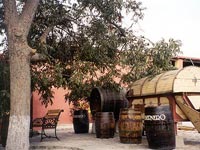 Lima
Lima
Also known as the "City of the Kings" or "Garden City" it is the capital of Peru. A bustling metropolis with over 7 million inhabitants, located on the coast, roughly mid-way between the Ecuadorean border and Chile. It was founded in 1535 in the Rimac valley by the Spanish conqueror, Francisco Pizarro. The city is very contrasting: beautiful historical buildings with balconies, convents, churches and plazas from the days of the Spaniards are located in the old city center, whereas modern buildings, parks, numerous restaurants, hotels and shopping centers are located in the residential areas of Miraflores, San Isidro, Monterrico, La Molina and others.
Lima has several splendid museums, galleries and monuments reeking with history! The summer beach season (December-April) is ideal for bathing and surfing, right below the cliffs overlooked by Miraflores and San Isidro! Quaint little beach towns with restaurants serving fresh sea food are spread along the 120 km (74.5645 mi) coast south of the city. Although during the cool season (May-November), the city is mostly overcast, lots of sun and pleasant countryside restaurants are found minutes away, just up the Rimac valley.
There are several pre-Inca cities on the outskirts of Lima, such as Cajamarquilla and Pachacamac, well worth visiting. The city is accessible by air from the U.S.A. (several daily nonstops from Miami, New York, Dallas, Atlanta, Houston, Los Angeles) and from practically all major European and South American Capitals. Likewise, it is well connected by air with daily flights to/from all major Peruvian cities. It is also linked to them by well paved highways and boasts of the highest railroad in the world, taking passengers and freight eastbound into the Andean mountains. Electricity in Lima - and also in other towns - is 220 volts, 60 cycles.
Machu Picchu,
Though uninhabited, this historical Inca citadel is one of the true marvels of the world !! The magnificent, breathtaking, conglomeration of stone ruins, palaces, towers, temples, terraces, staircases and other remains, nestling in mountains, surrounded by beautiful vegetation, is an unforgettable lifetime experience-in itself worth the journey to Peru !! Machu Picchu can be reached by railroad, helicopter or by walking the Inca Trail. The entry point to reach Machu Picchu is Cuzco, connected to Lima by daily flights.
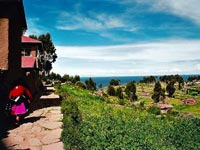 Mancora
Mancora
A small coastal village surrounded by an ever - increasing number of beach resorts, it is noted for its lovely bathing shores, snorkeling, windsurfing and other sea sports. Close by Cabo Blanco is home to the Black Marlin, Swordfish and other species; a location which was well known to Ernest Hemingway and inspired him to write "The Old Man and The Sea". The world's most perfect and even surfing waves break on many of these beaches. Accessible from Lima via the Tumbes and Talara Airports or by the Panamerican Highway.
Moquegua,
A city located on the Southern Peruvian Coast, with a population of 138,000 inhabitants. The climate is dry and warm with sunshine throughout most of the year. The town has a lovely view of the fertile valley it overlooks. Historians report that this town was closely related to the Tiahuanaco and Pucara cultures, belonging to the Lake Titicaca region, up in the highlands, further to the east. Moquegua is traditionally a fruit and wine producer, although now its main activity is mineral mining. It is in a volcanic area, close to Huaynaputina and Tixani mountains. The town has many monuments left by the Spaniards. Moquegua is famed for its varied and tasty sweet products, wines, pisco and cognac.
Nazca
Nazca is a very small community of just over 50,000 inhabitants, located 440 km (273 mi) south of Lima, on the Panamerican Highway. It is famed for the closeby mysterious "Nazca Lines", an unresolved marvel, even in our modern computer age! Visible by air from small aircraft and also from ground look-out points. These channels run along the ground in the desert over a surface area of more than five hundred square kilometres. Some authors have imagined the Nazca drawings to be the outline of a landing ground for extra-terrestial space ships. Others interested in the subject maintain that the villagers in the region had, in the far distant past, succeeded in flying through the air in balloons. Whatever the origin of these Nazca lines is, the Incas took the secret with them when they vanished.
Paracas,
Paracas is a Natural wildlife sanctuary, with an immense variety of birds, and marine life, including sea lions, penguins, red and white flamingos and the visiting huge Andean Condor! The bay is the location where Argentine General San Martin disembarked, to start off Peru's independence from the Spaniards.
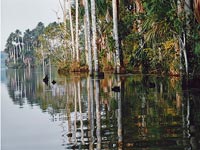 Pisco
Pisco
Located on the coast south of Lima, Pisco originally prospered because of its nearby vineyards. The town eventually gave its name to Peru's Brandy which was later used as the most important ingredient of the world - famed "Pisco Sour".
Piura
This is the main city on the Northern coast of the country. It can be reached daily by air. It is renowned for its well woven straw hats and other handicraft, including artesan silverware. It is close to Paita - the main northern city port and only a very short distance from the Chira Valley, one of the largest and most productive agricultural areas in Peru.
Pucallpa
The second largest city in Peru's jungle area, accesible by air daily from Lima and Iquitos. It is the most important port on the Ucayali river, well know for its lumber, coffee and cacao production.
Puerto Maldonado
A jungle port close to the bolivian border at the junction of the Tambopata and Madre de Dios rivers. A producer of lumber, rice, yuca, sugar cane and tropical fruits.
Puno
Puno is the capital of the province with the same name, has a population of about 80,000. It itself is a small dusty town. Its claim to fame is its location. It is located on the shores of Lake Titicaca, at an altitude of 12,421 feet. It is highly recommended you take it easy for a few days to get used to the altitude. The altitude also makes for the extremes in the climate in Puno. During daytime it can be very hot ( be very liberal with sun block), but at night the temperature can drop below the freezing point. The city itself may not be very interesting for travellers, but the surroundings are magnificent. It and the area around it are the cradle of the Aymara civilization and the legendary birthplace of the founders of the Inca empire. Puno lies on the shore of Lake Titicaca, the world's highest navigable lake, from whose waters the Inca believed Manco Capac, their cultural founder, emerged. Many ethnic groups like the Uros still depend on the the lake for their living. The Uros dwell on the floating islands they build with the lake's reed vegetation. Near Puno, overlooking Lake Umayo, are chullpas, or burial towers, that served as the tombs of the Aymara Lords. Tours can be readily put together upon arrival at a very reasonable price by your hotel.
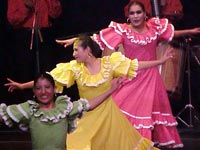 Tacna,
Tacna,
Tacna is located in the far south only 35 km (22 mi) from the border with Chile. Tacna has a population of about 170,000. The city lies in the Atacama desert near the Pacific Ocean and in summer it can get very hot. Again, don't spare the sun screen. Fortunately there's lots of shade especially in the downtown area with the palm-tree promenade and Plaza de Armas. Tacna is part of a duty free zone that is associated with Arica Chile. Consequently it has one of the biggest artifact markets around. In this case Japanese and Korean artifacts like color TV's, vcrs but the prices really are pretty good. There are also a lot of shops with traditional Peruvian handicrafts. It has daily flights to and from Lima and other major Peruvian cities.
Talara
Center of the largest coastal oilfields in Peru, just north of the Chira Valley, one of the most fertile, cotton, rice, mango, banana and produce production areas on the Peruvian coast.
Tarapoto
With a population of approximately 70,000 inhabitants, this town is located close to the famed �Pongo de Aguirre�, gorge where the Huallaga river roars through the Oriental Andes mountain range. It is in the region where the mountain area joins with the high jungle. Tarapoto is connected by air to Lima and several regional cities, such as Iquitos and Yurimaguas.
Tarma
An enchanting little town located approximately 3,000 m (9842.52 ft) above sea level in a valley full of Eucalyptus, wheat, Barley and corn fields. It is a relatively short distance from La Oroya (mining town) and 114 km. North of Huancayo. Another city with a nickname of its own : "Pearl of The Andes", it has some closeby Inca and Pre-Inca ruins. The road beyond Tarma descends rapidly into the rich (coffee and fruit producing) Chanchamayo Valley
Tingo Maria
A small town between Huancayo and Pucallpa which sprung up and grew when the road connecting these two locations was built. In fact, the town's main street is actually the road itself (Good old western style !). The most renowned local attraction is the Owl's Cave (Cueva de las Lechuzas), a few miles northeast of town, on the road to Pucallpa. The cave is full of beautiful stalagmites and stalactites with many, many nearly extinct nightbirds.
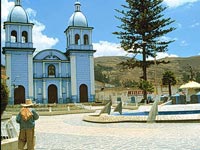 Trujillo
Trujillo
The colonial city of Trujillo is very close to the ruins of Chan-Chan. This was the one of the largest sund-dried brick cities in the world. Its remains still bear witness to a rich culture which died out before the arrival of the Incas over 500 years ago. Trujillo is situated in the fertile valley of Santa Catalina in an oasis bathed by the waters of the river Moche. It has some magnificent mansions and many baroque churches belonging to the Spanish period. A city of balconies and iron grilles, it is pleasant and hospitable. It can be reached from Lima daily by air, or by car via the Panamerican Highway.
Tumbes
The northernmost city of Peru, situated on the Tumbes River, just off the coast, a few miles south of the border with Ecuador. It is sunny throughout most of the year with a 24� C average temperature and a short rainy season, January thru March. Population is just under 200,000 inhabitants. The area surrounding the Tumbes River estuary is considered one of the most renowned Mangrove areas on the South American continent. Many shrimp farms are located in the general area. Several small tourist resorts are located on the coast just south of Tumbes with beautiful white sandy bathing beaches, windsurfing and deep sea fishing. The area is famed for its fresh tasty fish, shrimp, lobsters, oysters, etc. It can be reached from Lima on daily 1:30 hour flights or by the well-paved Panamerican Highway.














